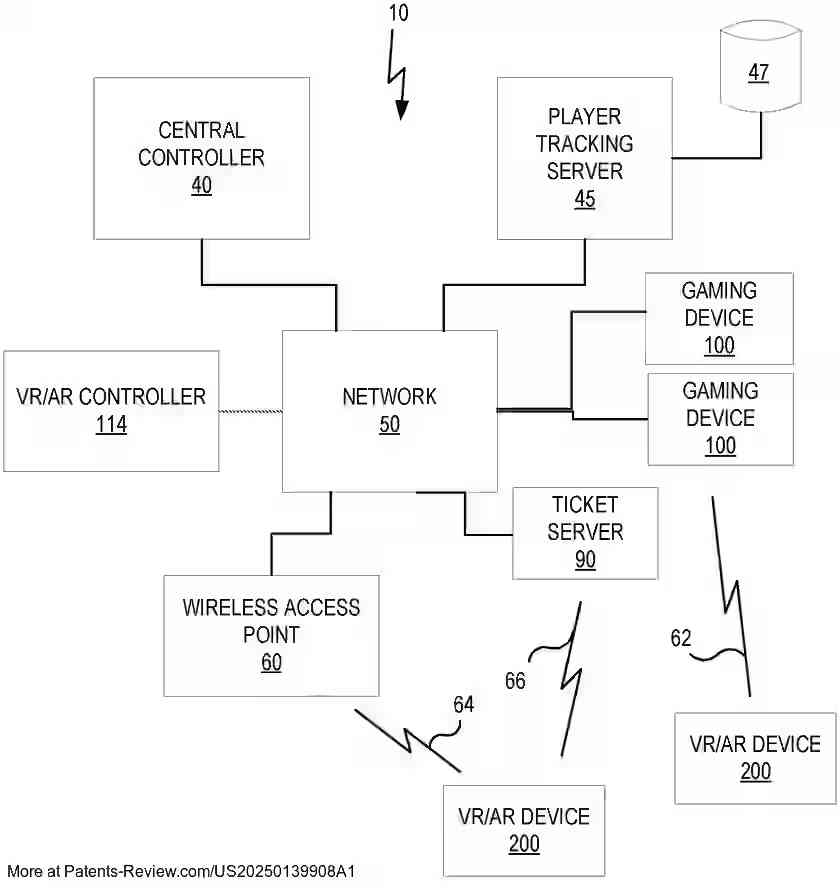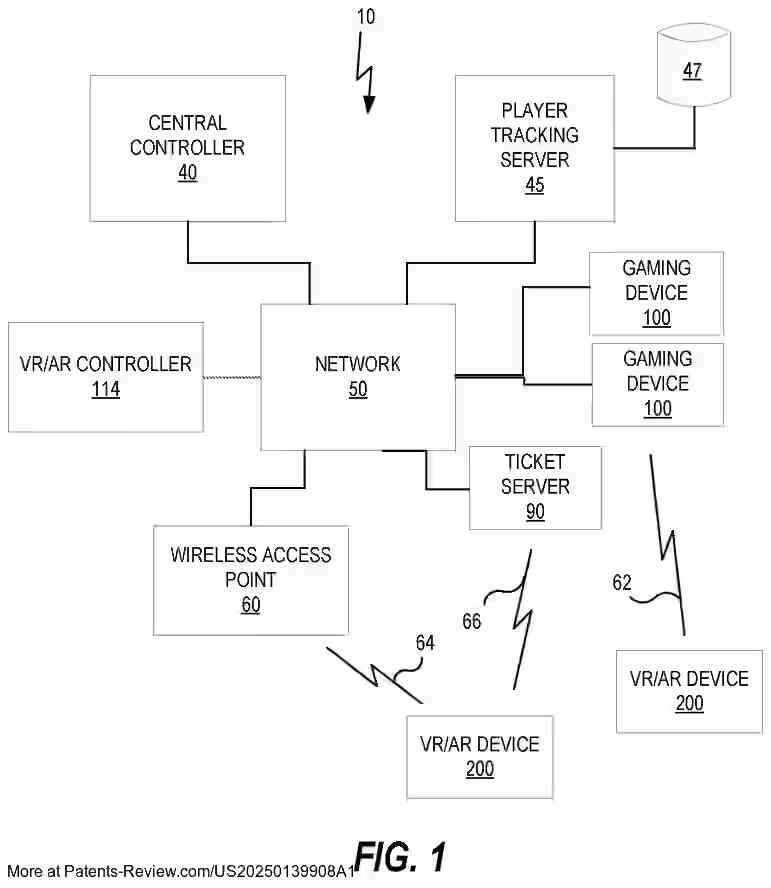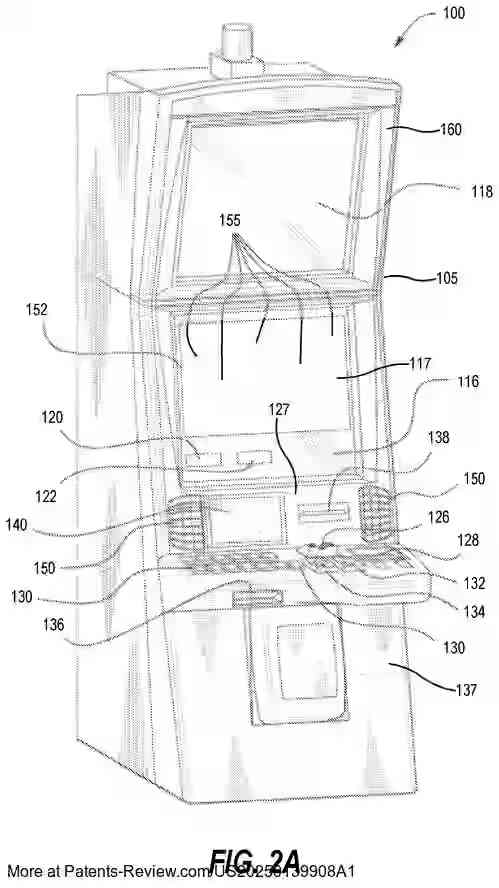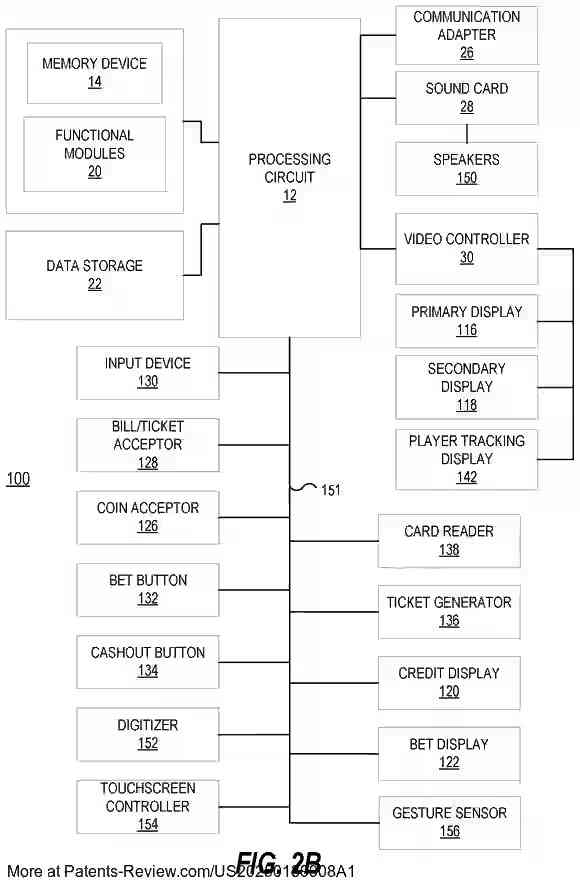SHARED IMMERSION FEATURES AMONG REAL-WORLD PLAYERS IN A SHARED VIRTUAL GAMING ENVIRONMENT
US20250139908
2025-05-01
Physics
G06T19/006
Inventors:
Assignee:
Applicant:
Drawings (4 of 13)




Smart overview of the Invention
The invention provides a shared virtual gaming environment (SVE) where players can experience immersive gameplay, interact with virtual representations of other players, and engage in virtual wagering games. Utilizing wearable gaming devices, players can receive display data that reflects their virtual orientation and location within the SVE. This data allows players to view a portion of the SVE that includes representations of other players, enhancing the social aspect of gaming. The system facilitates user input for wagering games and awards game results based on these interactions.
Technological Context
The development addresses the growing demand for realistic and engaging experiences within virtual worlds, particularly as metaverse technology gains traction. By creating persistent virtual environments that simulate real-world locations like casinos, this system enhances user enjoyment through consistent and immersive interactions. This approach solves the technical challenge of increasing player immersion by integrating advanced display technologies and sensory feedback devices.
System Components
A key component of the system is a processor circuit coupled with memory that executes machine-readable instructions. These instructions enable the creation of a real-time environmental model of the SVE, which includes multiple virtual personas and gaming devices. The processor transmits display data to player-worn devices, rendering parts of the SVE based on each player's virtual position and orientation. This setup allows for dynamic interaction among players and supports virtual wagering activities with real-time feedback and rewards.
Immersive Experience
The SVE leverages VR, AR, and MR technologies to create a three-dimensional metaverse experience. Players can use various devices like VR headsets and haptic gloves to engage in virtual social interactions, live events, and gambling activities. The environment supports avatar creation, allowing users to represent themselves accurately or creatively within the virtual space. The system also incorporates motion capture technology to project user movements onto avatars within the metaverse.
User Customization and Interaction
Players have the ability to customize their avatars and control how much personal information is shared within the SVE. This includes gaming profiles that may display achievements or preferences visible to other users. The system supports different levels of access for various user categories, enhancing privacy while maintaining social connectivity. Additionally, physical devices like electronic gaming machines (EGMs) can be paired with VR/AR setups, allowing seamless transitions between real-world and virtual gameplay.